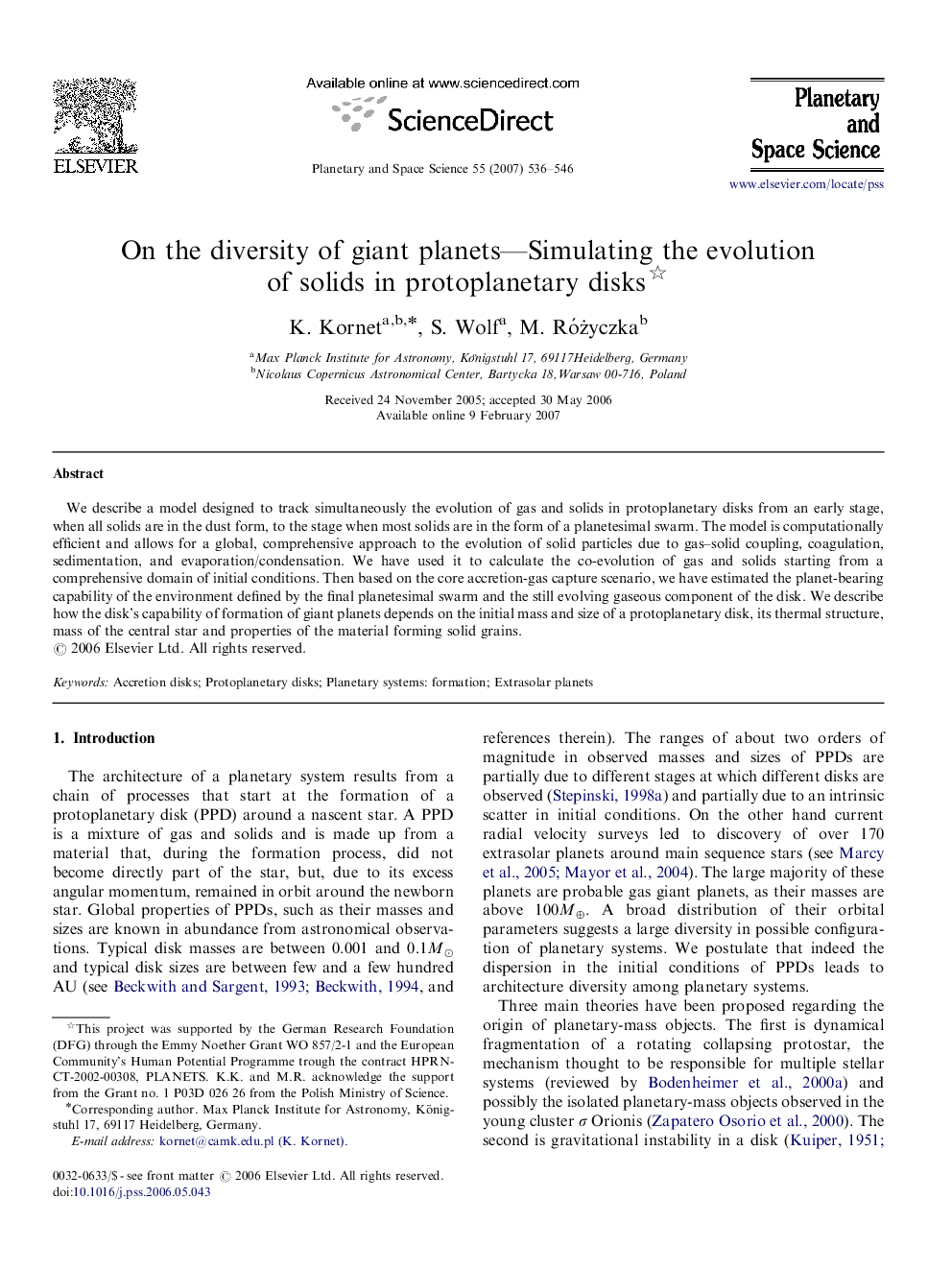| Article ID | Journal | Published Year | Pages | File Type |
|---|---|---|---|---|
| 1782626 | Planetary and Space Science | 2007 | 11 Pages |
Abstract
We describe a model designed to track simultaneously the evolution of gas and solids in protoplanetary disks from an early stage, when all solids are in the dust form, to the stage when most solids are in the form of a planetesimal swarm. The model is computationally efficient and allows for a global, comprehensive approach to the evolution of solid particles due to gas-solid coupling, coagulation, sedimentation, and evaporation/condensation. We have used it to calculate the co-evolution of gas and solids starting from a comprehensive domain of initial conditions. Then based on the core accretion-gas capture scenario, we have estimated the planet-bearing capability of the environment defined by the final planetesimal swarm and the still evolving gaseous component of the disk. We describe how the disk's capability of formation of giant planets depends on the initial mass and size of a protoplanetary disk, its thermal structure, mass of the central star and properties of the material forming solid grains.
Related Topics
Physical Sciences and Engineering
Earth and Planetary Sciences
Geophysics
Authors
K. Kornet, S. Wolf, M. Różyczka,
